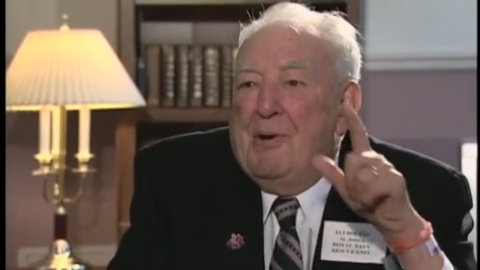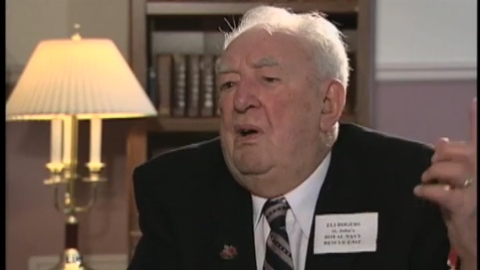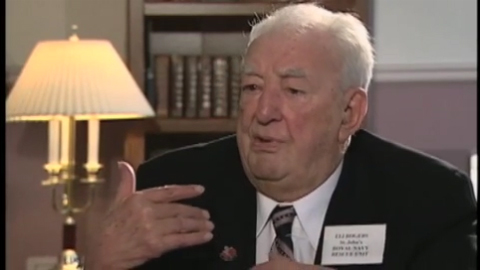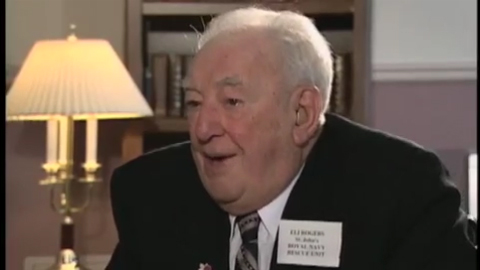Towing Ships
Heroes Remember
Towing Ships
Transcript
When we find a ship, of course, we determine if there’s anybody
alive on it and if they could take a tow. We’d pass them our
wire and we’d get as close as we could to them.
And then of course we’d have our rope on it as well.
The rope was I guess three strands of six inch rope so that’ll
give about 18 inch rope and the old ship, the other ship that we
were towing was about pretty nearly a mile behind us.
We took the old Neptune, which was a steaming vessel,
she was a wooden one, she was built in England or Scotland
and she had 500 tons of coal aboard and we’d tow.
We were 18 hours towing her 18 miles. The weather was so bad,
yeah, eventually she sank just outside the narrows.
Yeah, about 1:00 in the morning. Just barely got through port
and down she went. The old Neptune, yeah.
After every tow, we had to straighten things up and straighten
up the tow rope and splice it up, and this and that and,
you know, maintenance of the ship and everything else.
Interviewer: Did you love those ships, and you loved the crew?
Yeah, I loved it yeah, it was a good experience,
a good experience.
Description
Mr Rogers gives us an idea of what it was like towing ships.
Eli Rogers
Eli Rogers was born in Newfoundland on February 16, 1919. The son of a locomotive engineer he enlisted with the Navy when he was 21 years old. Mr. Rogers served on many ships in the Navy with the Royal Navy Rescue unit.
Meta Data
- Medium:
- Video
- Owner:
- Veterans Affairs Canada
- Duration:
- 2:16
- Person Interviewed:
- Eli Rogers
- War, Conflict or Mission:
- Second World War
- Branch:
- Navy
- Units/Ship:
- Royal Navy Rescue Unit
Related Videos
- Date modified:






